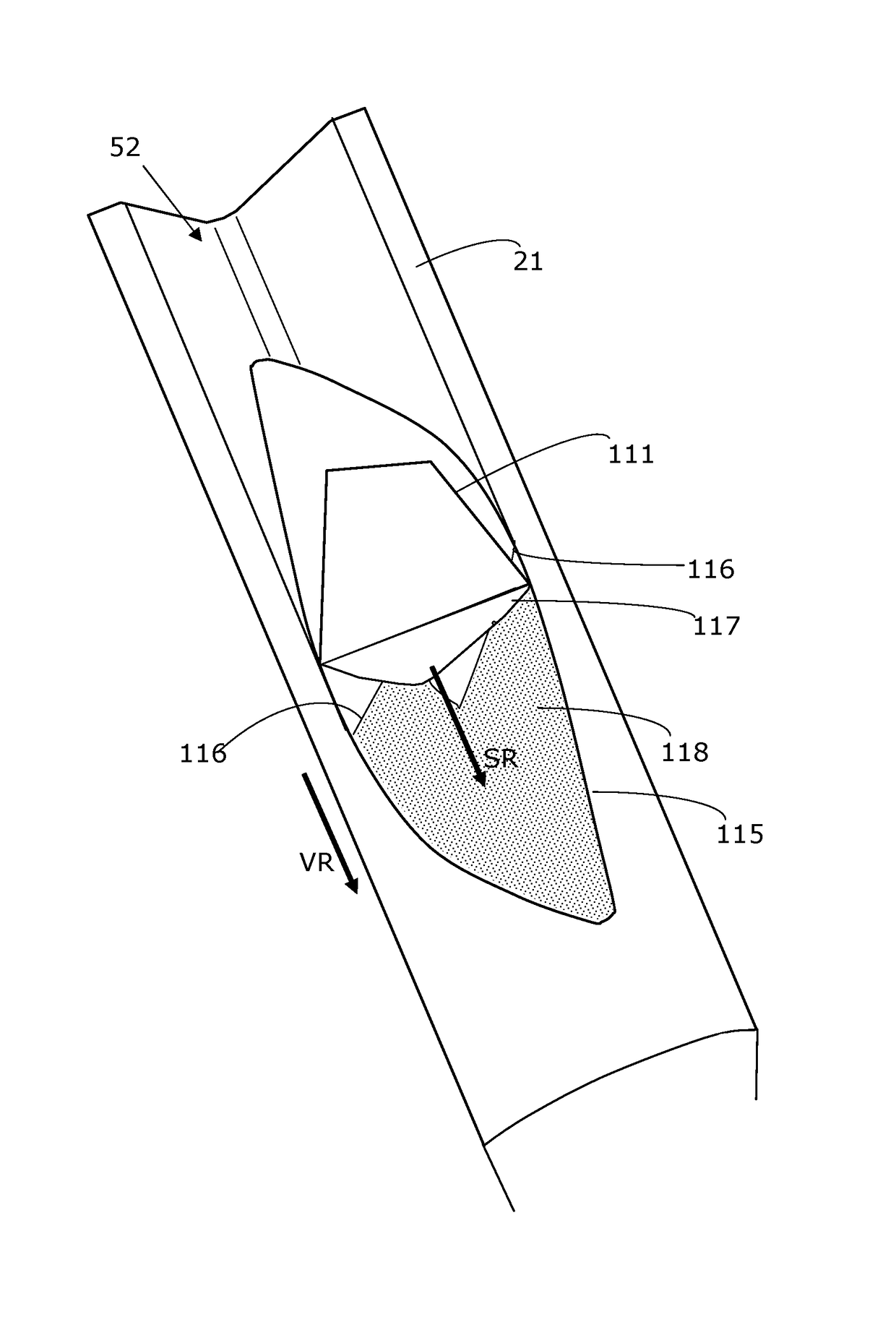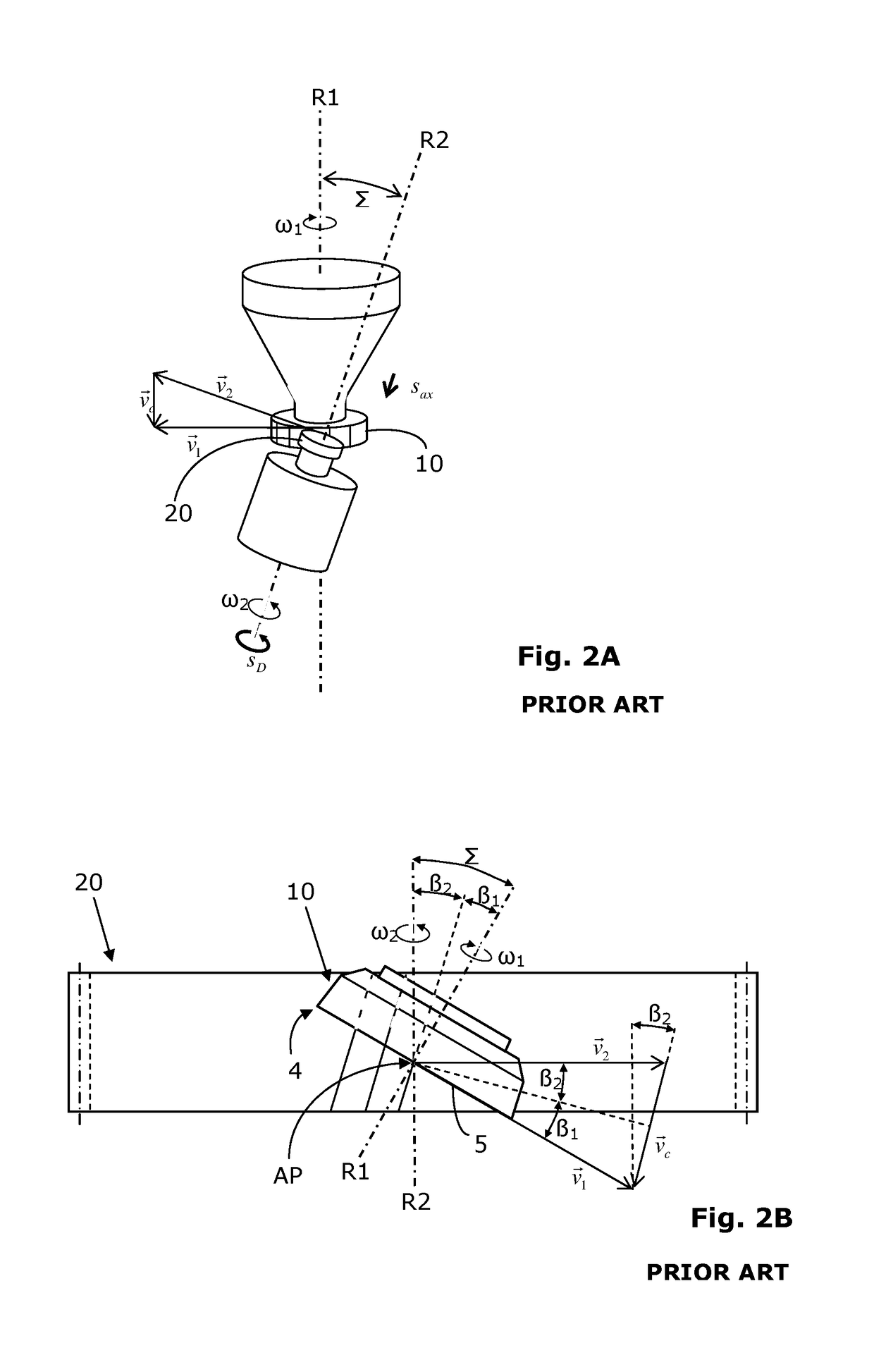Power skiving method having multiple cut strategy
a power skiving and multiple cutting technology, applied in the direction of electric programme control, program control, instruments, etc., can solve the problems of skiving not being performed, difficulty in achieving the effect of equal chip removal thickness and effective chip removal thickness
- Summary
- Abstract
- Description
- Claims
- Application Information
AI Technical Summary
Benefits of technology
Problems solved by technology
Method used
Image
Examples
Embodiment Construction
[0064]Terms are used in conjunction with the present description which are also used in relevant publications and patents. However, it is to be noted that the use of these terms is only to serve for better comprehension. The concept of the invention and the scope of protection of the patent claims are not to be restricted in the interpretation by the specific selection of the terms. The invention may be readily transferred to other term systems and / or technical fields. The terms are to be applied accordingly in other technical fields.
[0065]Rotationally-symmetrical, periodic structures are, for example, gearwheels (such as spur gears) having internal or external gear teeth. However, this can also relate, for example, to brake disks, clutch or transmission elements, and the like. In particular, this relates to the production of pinion shafts, worms, elements for gearwheel pumps, ring joint hubs (ring joints are used, for example, in the automotive sector, to transmit the force from a ...
PUM
| Property | Measurement | Unit |
|---|---|---|
| angle | aaaaa | aaaaa |
| intersection angle | aaaaa | aaaaa |
| rake angle | aaaaa | aaaaa |
Abstract
Description
Claims
Application Information
 Login to View More
Login to View More - R&D
- Intellectual Property
- Life Sciences
- Materials
- Tech Scout
- Unparalleled Data Quality
- Higher Quality Content
- 60% Fewer Hallucinations
Browse by: Latest US Patents, China's latest patents, Technical Efficacy Thesaurus, Application Domain, Technology Topic, Popular Technical Reports.
© 2025 PatSnap. All rights reserved.Legal|Privacy policy|Modern Slavery Act Transparency Statement|Sitemap|About US| Contact US: help@patsnap.com



